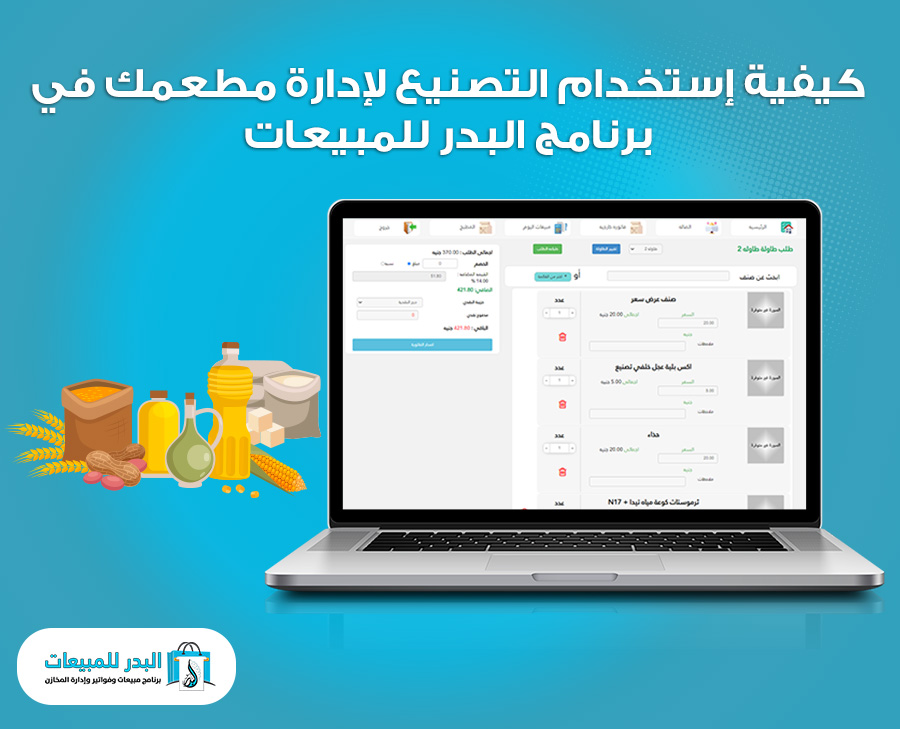How to Use Tasnee to Manage Restaurants in Al Badr Sales Program
In this article, we will explore how to use Tasnee to manage restaurants efficiently with the Al Badr Program for Sales and Restaurant Management. This system helps restaurant owners streamline operations, track raw materials, and determine accurate meal pricing. By implementing use Tasnee to manage restaurants, businesses can enhance financial accuracy, improve order management, and optimize profit margins.
The Role of Al Badr in Using Tasnee to Manage Restaurants
The Al Badr program offers a comprehensive solution for restaurant management, allowing users to use Tasnee to manage restaurants by integrating sales, inventory, and expense tracking. This software ensures precise control over stock levels, automatically deducting raw materials as meals are prepared. By leveraging the ability to use Tasnee to manage restaurants, owners can avoid waste, maintain accurate cost calculations, and improve overall efficiency.
Types of Manufacturing and Their Importance in Restaurant Management
When you use Tasnee to manage restaurants, understanding manufacturing types is crucial. The Al Badr program supports two types:
- Discrete Manufacturing – Suitable for items that can be pre-produced and stored, such as bakery goods.
- Make-to-Order Manufacturing – Ideal for restaurants where meals are prepared upon request, ensuring freshness.
By applying the right manufacturing type when you use Tasnee to manage restaurants, businesses can control costs and minimize inventory waste.
Steps to Activate Manufacturing in Al Badr for Restaurant Management
To fully use Tasnee to manage restaurants, proper setup in the Al Badr program is essential. Users must navigate to “Settings” and select “Program Settings” to enable manufacturing. There are three key options:
- No Manufacturing – If the feature is not required.
- Separate Manufacturing – When pre-prepared ingredients are used.
- Sales-Based Manufacturing – When raw materials are deducted only upon order.
By selecting the right setting, restaurants can effectively use Tasnee to manage restaurants and maintain precise financial records.
Adding and Managing Raw Materials in the Al Badr Program
A crucial step in successfully using Tasnee to manage restaurants is inputting raw materials correctly. Restaurant managers must navigate to “Items” and add raw ingredients such as flour, cheese, or chicken, specifying their purchase price and supplier. This ensures that when a meal is sold, the system automatically calculates costs. When businesses use Tasnee to manage restaurants, this process eliminates pricing errors and helps maintain profitability.
Finalizing Manufacturing and Sales Transactions
The last step to fully use Tasnee to manage restaurants in Al Badr is to define the manufacturing process. This includes:
- Selecting the meal or dish to be manufactured
- Specifying the quantity of raw materials used
- Setting production output per unit
- Updating the purchase price based on manufacturing costs
By completing these steps, restaurant owners who use Tasnee to manage restaurants can track real-time profit margins, monitor ingredient usage, and streamline daily operations.
Conclusion
By implementing the Al Badr Program, restaurant owners can efficiently use Tasnee to manage restaurants, ensuring smooth workflow, cost accuracy, and improved profitability. This system simplifies meal pricing, tracks raw material consumption, and automates inventory management. When businesses consistently , they gain better control over expenses, leading to long-term success in the food industry.

